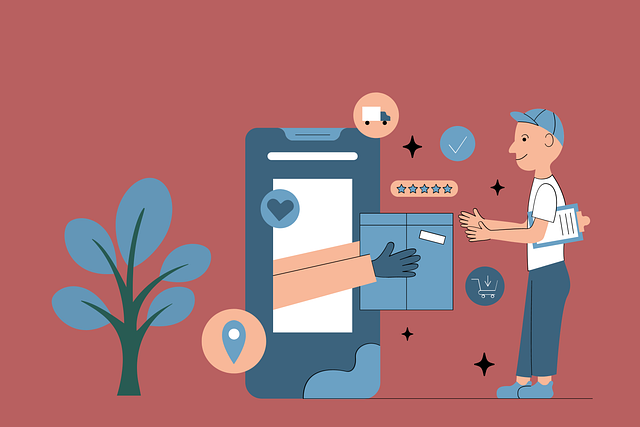AI chatbots are revolutionizing e-commerce by offering 24/7 support, handling diverse tasks, and providing personalized experiences. To integrate them effectively, businesses should consider NLP capabilities, integration options, conversational flows, and pricing models of different platforms. The process involves selecting a suitable platform, defining use cases, designing conversation flows, training the chatbot, seamless integration, and continuous monitoring. By optimizing KPIs like conversation completion rate, user satisfaction, and average handle time through A/B testing, log analysis, and user surveys, businesses can ensure AI chatbots online enhance customer service efficiently and cost-effectively in today's digital landscape.
In today’s digital era, AI chatbots are transforming e-commerce by enhancing customer interactions and driving sales. This comprehensive guide explores the best AI chatbot platforms tailored for online retail. We delve into the benefits and key features of these tools, providing a side-by-side comparison to help you choose. Additionally, we offer a step-by-step integration guide and strategies for evaluating chatbot performance. Unlock the potential of AI chatbots to revolutionize your e-commerce experience.
- Understanding AI Chatbots for E-commerce: Benefits and Key Features
- Top AI Chatbot Platforms for Online Retail: A Comprehensive Comparison
- Integrating AI Chatbots into Your E-commerce Site: Step-by-Step Guide
- Measuring Success: Metrics and Strategies for AI Chatbot Performance Evaluation
Understanding AI Chatbots for E-commerce: Benefits and Key Features

AI chatbots have revolutionized e-commerce, offering a multitude of benefits that enhance customer experiences and streamline business operations. These virtual assistants can handle a wide range of tasks, from answering simple queries to processing complex orders. By integrating AI chatbots online, businesses can expect improved efficiency, reduced response times, and around-the-clock availability, ensuring customers receive immediate assistance regardless of the time zone.
Key features of top-tier e-commerce AI chatbots include natural language processing (NLP) for understanding customer intent, context awareness to remember previous interactions, and machine learning capabilities that allow them to learn from each conversation. They can provide personalized product recommendations based on browsing history and purchase behavior, offer real-time support, and even handle returns or exchanges, making online shopping more convenient and satisfying for users.
Top AI Chatbot Platforms for Online Retail: A Comprehensive Comparison

In today’s digital era, AI chatbots have become a game-changer for online retail, revolutionizing customer service and sales experiences. When it comes to selecting the best AI chatbot for your e-commerce platform, several top platforms stand out with their advanced features and capabilities. Each offers unique advantages tailored to different business needs, making the choice an important strategic decision.
A comprehensive comparison of these platforms reveals key differences in areas such as natural language processing (NLP), integration capabilities, conversational flows, and pricing models. For instance, some chatbots excel in providing personalized product recommendations based on user interactions, while others focus on handling customer inquiries efficiently. Popular options include platforms known for their robust NLP algorithms, allowing for more human-like conversations, and those with seamless integration capabilities to enhance existing e-commerce systems. Understanding these aspects is crucial in choosing the right AI chatbot that aligns with your online retail goals, ensuring a successful implementation that enhances customer engagement and drives sales.
Integrating AI Chatbots into Your E-commerce Site: Step-by-Step Guide

Integrating AI chatbots into your e-commerce site can significantly enhance customer experience and drive sales. Here’s a step-by-step guide to help you get started:
1. Choose the Right AI Chatbot Platform: Select a platform that suits your business needs, offering features like natural language processing, multi-language support, and integration with popular e-commerce platforms like Shopify, WooCommerce, or Magento. Look for options that provide customization capabilities to match your brand identity.
2. Define Use Cases: Identify specific areas where an AI chatbot can add value. Common use cases include customer support (answering FAQs, resolving basic issues), product recommendations, and providing real-time assistance during the checkout process. Understanding these scenarios will guide the chatbot’s design and functionality.
3. Design Chatbot Conversations: Create a flowchart outlining the conversation paths, considering different user queries and responses. Ensure the dialogue is engaging and aligns with your brand tone of voice. Map out potential outcomes for each interaction to make the chatbot as effective as possible.
4. Train and Test: Feed the AI chatbot with relevant data, including product information, customer inquiries, and industry-specific keywords. Train it using this data to recognize patterns and generate accurate responses. Thoroughly test the chatbot across various scenarios to identify and fix any inaccuracies or shortcomings.
5. Integrate into Your Site: Implement the chosen platform’s integration tools provided for your e-commerce site. This process typically involves adding a chat widget, embedding scripts, or using API connections. Ensure seamless functionality and aesthetic alignment with your website design.
6. Launch and Monitor: After setup, deploy the AI chatbot live and closely monitor its performance. Analyze user interactions, feedback, and key metrics to continuously refine and improve the chatbot’s capabilities over time. Regular updates will enhance its effectiveness in serving your customers.
Measuring Success: Metrics and Strategies for AI Chatbot Performance Evaluation

When evaluating the success of an AI chatbot, understanding key performance indicators (KPIs) is essential. Metrics such as conversation completion rate, user satisfaction scores, and average handle time are crucial for gauging effectiveness. These KPIs help assess how well the chatbot understands customer inquiries, provides accurate responses, and efficiently resolves issues.
Strategies for performance evaluation include A/B testing, where different chatbot versions or response strategies are compared; analyzing log data to track query types and resolution rates; and conducting user surveys to gather direct feedback on their experience. By combining these approaches, businesses can optimize their AI chatbots online, ensuring they deliver exceptional customer service while remaining cost-efficient.
AI chatbots are transforming the online retail landscape, offering enhanced customer experiences and increased operational efficiency. By implementing these intelligent assistants on e-commerce sites, businesses can provide 24/7 support, offer personalized product recommendations, and improve overall customer satisfaction. The comprehensive guide in this article has outlined the key benefits, features, and integration strategies for AI chatbots, empowering merchants to make informed decisions and leverage the power of AI to stay competitive in the digital marketplace. Discovering the best eCommerce AI chatbot can be a game-changer for your online business – it’s time to dive into this exciting technology.
